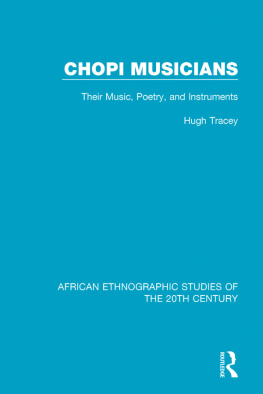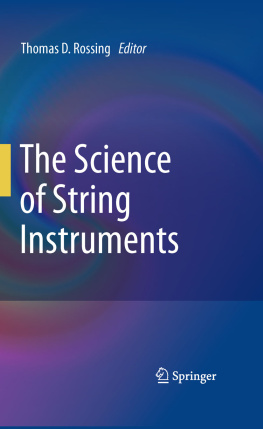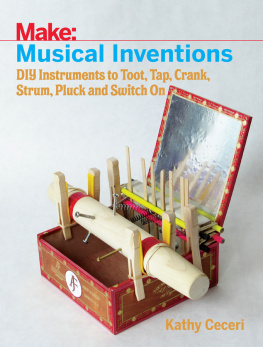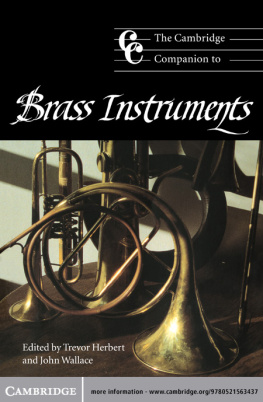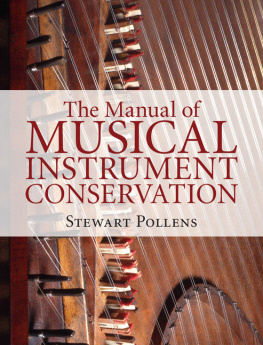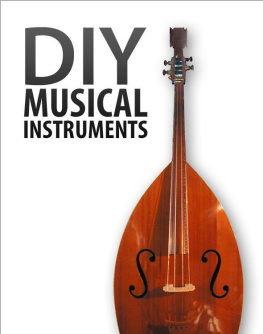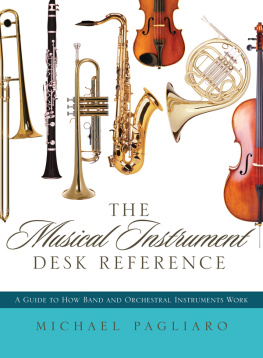Short titles (omitting the subtitles and curtailing the lengthier titles) are used in the notes to save space, and full publication details for books are also omitted there; full titles and publisher data will be found in the bibliography. The notes are deliberately copious to enable further research from a book that, while attempting to cover the origin and development of the musical instruments of the world, inevitably leaves out many details.
In both the bibliography and notes, the following abbreviations are used for those journals or other series that are frequently cited and for some well-known publishers who have produced many books in our field (this list reappears at the beginning of the bibliography).

About the Author
Jeremy Montagu has published a number of books on and all the instrument articles in The Oxford Illustrated musical instruments, including Musical Instruments of the Encyclopedia of the Arts and the 2002 edition of The Ox-Bible (Scarecrow Press, 2002), Reed Instruments: The ford Companion to Music . He owns one of the largest pri- Montagu Collection, an Annotated Catalogue (Scarecrow vate collections of musical instruments in the world, Press, 2001), Percussion Instruments (Yale University many of which are illustrated here. Now retired, he was Press, 2002), Minstrels and Angels: Carvings of Musicians the curator of the Bate Collection of Musical Instru - in Medieval English Churches , with his late wife, Gwen ments and lecturer in the University of Oxford. He has (Scarecrow Press, 1998), and others that can be seen on also been a visiting lecturer in a number of other univer - his website, www.jeremymontagu.co.uk. He has also sities. He is the president of the Galpin Society for Mu-written many articles in journals such as the Galpin Soci- sical Instruments and a Fellow of the Society of Anti - ety Journal and Early Music , as well as entries in several quaries of London. He is also a past president of the encyclopedias, including the New Grove dictionaries European Seminar in Ethnomusicology.

Acknowledgments
First in date, to a Belgian professor whose name I never learned but who had the kindness to show a British Army sergeant around the Institut Fouad Premier de Musique Arabe (I hope that after nearly 60 years I have remembered the 1940s name aright) and to give me an introduction to Dr. Hans Hickmann, who was then living in Cairo. Then to Eric Halfpenny and Reginald Morley-Pegge, who introduced me to the history of our own instruments and to the Galpin Society. And then to Dr. Otto W. Samson of the Horniman Museum in London, who stirred the enthusiasm of his temporary curator of musical instruments once again into those of the rest of the world. He encouraged me to become a Fellow of the Royal Anthropological Institute, where I was generously welcomed by Anthony Christie, Klaus Wachsmann, and many of my elders and betters, and where I soon became secretary of the Ethnomusicology Panel, whose members such as Nazir Ali Jairazbhoy, David Rycroft, Raymond Clausen, John Okell, and others generously expanded my knowledge of instruments and music through their fieldwork and enriched my collection of instruments, iconography, and recordings.
Much of what one learns, one learns from ones mentors, colleagues, friends, and sources, more than I have space or, shamefacedly, memory to record, though in all four of those categories I cannot sufficiently thank James Blades, Dr. Laurence Picken, and Tony Bingham for all their kindnesses. Then once, and if, one becomes an academic (for which I have to thank R. Thurston Dart, Stanley Glasser, James Wyly, Philip Bate, and London University, Grinnell College, Iowa, and Oxford University), one learns continually from ones students, one of whom, Dr. Lynda Sayce, has been more than generous with her time in reading this book for clarity. For any remaining confusions and obscurities, I can only blame my obduracy in stubbornly adhering to my original text. For encouragement in writing this book and others, I am deeply indebted to Bruce Phillips. For the care and skill shown in editing this text, I am most grateful to Jessica McCleary and Jack Brostrom of Scarecrow Press.
Above all, I honor the patience and encouragement of my late wife, to whose memory this book is dedicated, indeed a woman of valor and of worth immeasurably above rubies.
AFTERWORD

Archaeology and Other -ologies
The proper study of mankind is man, said Alexander Pope, and study of is as good a translation of -ology as any other. Such study began in Europe in the sixteenth and seventeenth centuries and led to the Renaissance. In Italy, accademie were established, with similar bodies in France and Germany, and in Britain with the Royal Society, founded in 1662. Today that society is purely for science as we understand the word today, but at that time science, as its name indicates, was taken to cover all aspects of knowledge.
Initially, and in some respects for long after, musical instruments were regarded as curiosities, something to display in a cabinet with no interest in their function or capability. However, with the beginnings of the scientific approach, the remnants of earlier times began to be recognized as the evidence of the work and culture of our ancestors and predecessors and to be regarded as antiquities. Thus what we now call archaeology came into being even before that term was first so called, as the study of antiquities and of antiquity itself. Equally the exotica brought back by the early explorers as souvenirs and curiosities began to be recognized as the work of people not unlike ourselves, and this was the start of anthropology.
The antiquaries, as archaeologists were then called, came to realize that the material relics of earlier times were not all coeval, that some were earlier than others. Prehistory had to be divided into discrete partsa process that has continued to the present day, for new discoveries continually result in the need for new categories and the redistribution of old ones.
Briefly, prehistoric time was divided into four great periods: the Paleolithic, Neolithic, Bronze, and Iron ages. Between the Paleolithic and Neolithicthat is, the Old and New Stoneages, the Mesolithic, or Middle Stone Age, led an uneasy existence, sometimes being recognized in its own right, sometimes being absorbed into either or both of its neighbors. Even today there is no general agreement for the dating of these ages, and even where there is agreement, they vary widely in different parts of the world. The earliest hominids, the ancestors of humanity, date from anything between four million and two million years ago, and the earliest dates for Homo sapiens , modern man, are anywhere around 100,000 to 90,000 years in the past, still in the Paleolithic period, arriving in Europe about 50,000 years ago. The Bronze Age started in different parts of the world between 5000 and 2000 BC. Between these two ages came the Neolithic, which is even more difficult to date because authorities are divided as to what defines that period: was it the invention of pottery, the start of agriculture, or the establishment of towns and cities? There is no agreement, and all three happened at different times in different places.





